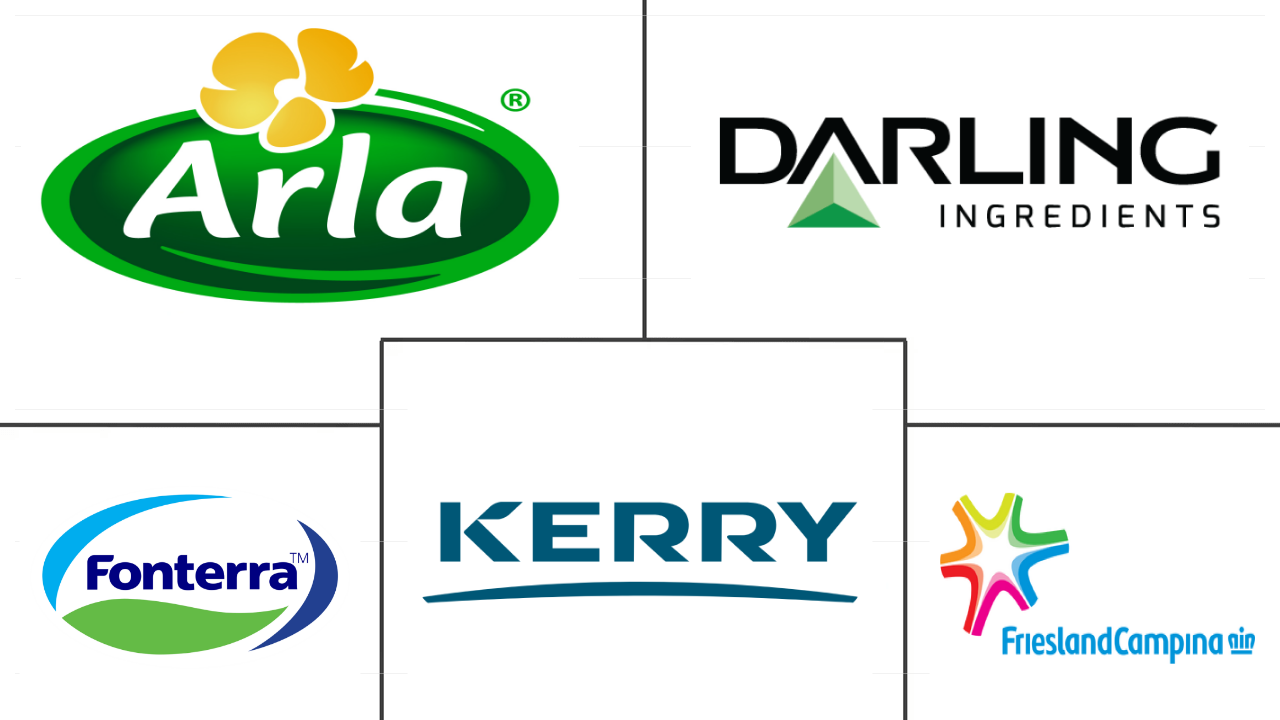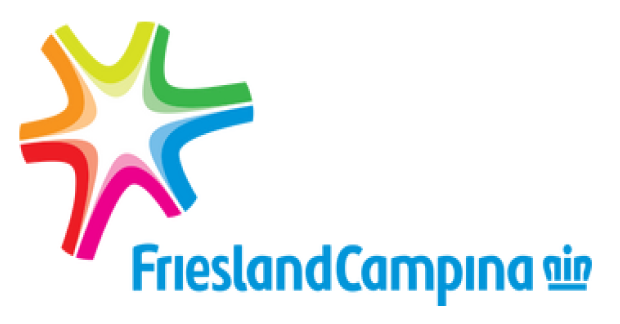Market Size of germany animal protein Industry
|
|
Study Period | 2017 - 2029 |
|
|
Market Size (2024) | USD 300.9 Million |
|
|
Market Size (2029) | USD 368.9 Million |
|
|
Largest Share by End User | Food and Beverages |
|
|
CAGR (2024 - 2029) | 4.15 % |
|
|
Fastest Growing by End User | Supplements |
Major Players |
||

|
||
|
*Disclaimer: Major Players sorted in no particular order |
Germany Animal Protein Market Analysis
The Germany Animal Protein Market size is estimated at 300.9 million USD in 2024, and is expected to reach 368.9 million USD by 2029, growing at a CAGR of 4.15% during the forecast period (2024-2029).
300.9 Million
Market Size in 2024 (USD)
368.9 Million
Market Size in 2029 (USD)
4.18 %
CAGR (2017-2023)
4.15 %
CAGR (2024-2029)
Largest Market by Product Type
25.90 %
value share, Gelatin, 2023
The demand for skin-boosting foods surged the demand for gelatin, making it a leading segment. By form, the segment is majorly dominated by animal-sourced gelatin.
Largest Market by End User
71.44 %
value share, Food and Beverages, 2023
Increased demand for healthy foods, especially skin-boosting foods, boosted animal protein demand in the F&B market, making it a leader in the end-user category.
Largest Market by Product Type
6.70 %
Projected CAGR, Collagen, 2024-2029
Collagen possesses multi-functionality and contributes to enhanced muscle growth, leading the supplement industry to drive segmental growth, mainly in sports nutrition.
Fastest growing Market by End User
5.39 %
Projected CAGR, Supplements, 2024-2029
The supplements segment is the fastest-growing segment, supported by the sports and nutrition sub-segment. The rise in fitness enthusiasts in the country drives demand for animal proteins.
Leading Market Player
17.59 %
market share, Koninklijke FrieslandCampina N.V., 2021

Koninklijke Friesland Campina NV gained a competitive market edge due to its extensive product portfolio and strategic moves toward incorporating innovation.
Personal care and cosmetic segment is expected to gain higher sales in forecast period due to growing consumer preferences for collagen-based beauty products i.e. beneficial for skin
- Among end users, the F&B segment dominated the application of various animal proteins in 2022. This is majorly due to the bakery sub-segment dominating the market, with a market share of around 30% in 2022. The application of animal proteins in the bakery sector is rising, aided by pumped demand for functional bread. Local consumers are developing a strong liking for products with additional health benefits, mainly protein. Thus, users are replacing high-carb bakery goods with high-protein bakery goods. Whey protein demand in beverages is rising with the growing health awareness in the country. Ingredients, such as organic and grass-fed whey, have gained prominence due to health and ethical concerns.
- In terms of growth rate, the personal care and cosmetics segment is the second fastest-growing segment. It is projected to register a CAGR of 4.19%, by value, during the forecast period. Collagen is the most common animal protein used for personal care applications owing to its skin elasticity strengthening and hydration properties while preventing hair follicle damage and greying.
- The supplements segment held the second-largest share of the animal protein market, by value, in 2022. It was majorly dominated by the sports/performance nutrition segment, which is anticipated to drive the market with a CAGR of 6.24%, by value, in the forecast period. Rising health concerns, a higher prevalence of obesity, and the rise in fitness clubs in the country are leading to increased demand for the segment, especially in the sports nutrition category. With 11,660,000 gym members nationwide, around 14% of the German population were gym members in 2021, driving the demand for sports nutrition supplements.
Germany Animal Protein Industry Segmentation
Casein and Caseinates, Collagen, Egg Protein, Gelatin, Insect Protein, Milk Protein, Whey Protein are covered as segments by Protein Type. Animal Feed, Food and Beverages, Personal Care and Cosmetics, Supplements are covered as segments by End User.
- Among end users, the F&B segment dominated the application of various animal proteins in 2022. This is majorly due to the bakery sub-segment dominating the market, with a market share of around 30% in 2022. The application of animal proteins in the bakery sector is rising, aided by pumped demand for functional bread. Local consumers are developing a strong liking for products with additional health benefits, mainly protein. Thus, users are replacing high-carb bakery goods with high-protein bakery goods. Whey protein demand in beverages is rising with the growing health awareness in the country. Ingredients, such as organic and grass-fed whey, have gained prominence due to health and ethical concerns.
- In terms of growth rate, the personal care and cosmetics segment is the second fastest-growing segment. It is projected to register a CAGR of 4.19%, by value, during the forecast period. Collagen is the most common animal protein used for personal care applications owing to its skin elasticity strengthening and hydration properties while preventing hair follicle damage and greying.
- The supplements segment held the second-largest share of the animal protein market, by value, in 2022. It was majorly dominated by the sports/performance nutrition segment, which is anticipated to drive the market with a CAGR of 6.24%, by value, in the forecast period. Rising health concerns, a higher prevalence of obesity, and the rise in fitness clubs in the country are leading to increased demand for the segment, especially in the sports nutrition category. With 11,660,000 gym members nationwide, around 14% of the German population were gym members in 2021, driving the demand for sports nutrition supplements.
| Protein Type | |
| Casein and Caseinates | |
| Collagen | |
| Egg Protein | |
| Gelatin | |
| Insect Protein | |
| Milk Protein | |
| Whey Protein | |
| Other Animal Protein |
| End User | ||||||||||||
| Animal Feed | ||||||||||||
| ||||||||||||
| Personal Care and Cosmetics | ||||||||||||
|
Germany Animal Protein Market Size Summary
The Germany Animal Protein Market is experiencing a steady expansion, driven by diverse applications across food and beverage, personal care, and sports nutrition sectors. The food and beverage segment, particularly the bakery sub-segment, holds a significant share due to the increasing consumer preference for high-protein products over traditional high-carb options. This shift is fueled by a growing health consciousness among consumers, who are increasingly seeking products with added health benefits, such as functional breads enriched with protein. The demand for whey protein in beverages is also on the rise, supported by the popularity of organic and grass-fed options. In the personal care industry, collagen remains a key ingredient due to its beneficial properties for skin and hair, while the sports nutrition segment is witnessing robust growth, driven by rising health concerns and the proliferation of fitness clubs.
Germany's robust dairy farming industry and its position as a leading producer of milk and pork in Europe further bolster the animal protein market. The country's free trade policies facilitate significant exports, making it a major player in the global market. Despite a decline in the number of cattle farms, the average farm size is increasing, contributing to higher milk production per cow. The market is characterized by a fragmented landscape, with major companies like Arla Foods, Darling Ingredients, and Fonterra Co-operative Group playing pivotal roles. Recent strategic acquisitions and product launches, such as Lapi Gelatine's acquisition of Juncà Gelatines and Rousselot's introduction of marine collagen peptides, highlight the ongoing innovation and expansion efforts within the industry. These developments underscore the dynamic nature of the market, driven by consumer demand for high-quality, ethically sourced animal protein products.
Germany Animal Protein Market Size - Table of Contents
-
1. MARKET SEGMENTATION (includes market size in Value in USD and Volume, Forecasts up to 2029 and analysis of growth prospects)
-
1.1 Protein Type
-
1.1.1 Casein and Caseinates
-
1.1.2 Collagen
-
1.1.3 Egg Protein
-
1.1.4 Gelatin
-
1.1.5 Insect Protein
-
1.1.6 Milk Protein
-
1.1.7 Whey Protein
-
1.1.8 Other Animal Protein
-
-
1.2 End User
-
1.2.1 Animal Feed
-
1.2.2 Food and Beverages
-
1.2.2.1 By Sub End User
-
1.2.2.1.1 Bakery
-
1.2.2.1.2 Beverages
-
1.2.2.1.3 Breakfast Cereals
-
1.2.2.1.4 Condiments/Sauces
-
1.2.2.1.5 Confectionery
-
1.2.2.1.6 Dairy and Dairy Alternative Products
-
1.2.2.1.7 RTE/RTC Food Products
-
1.2.2.1.8 Snacks
-
-
-
1.2.3 Personal Care and Cosmetics
-
1.2.4 Supplements
-
1.2.4.1 By Sub End User
-
1.2.4.1.1 Baby Food and Infant Formula
-
1.2.4.1.2 Elderly Nutrition and Medical Nutrition
-
1.2.4.1.3 Sport/Performance Nutrition
-
-
-
-
Germany Animal Protein Market Size FAQs
How big is the Germany Animal Protein Market?
The Germany Animal Protein Market size is expected to reach USD 300.95 million in 2024 and grow at a CAGR of 4.15% to reach USD 368.86 million by 2029.
What is the current Germany Animal Protein Market size?
In 2024, the Germany Animal Protein Market size is expected to reach USD 300.95 million.

